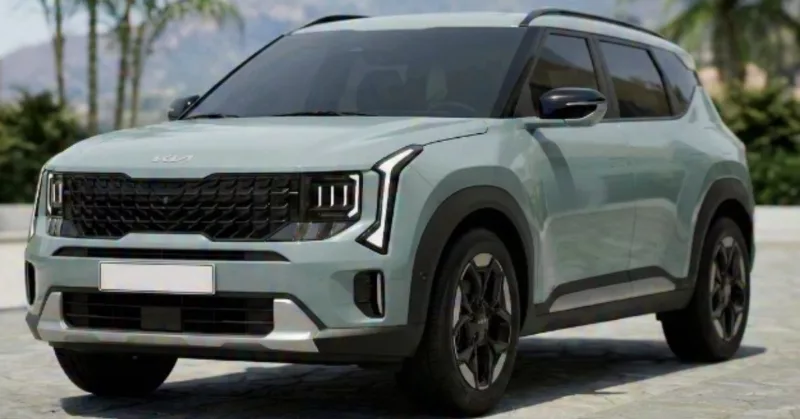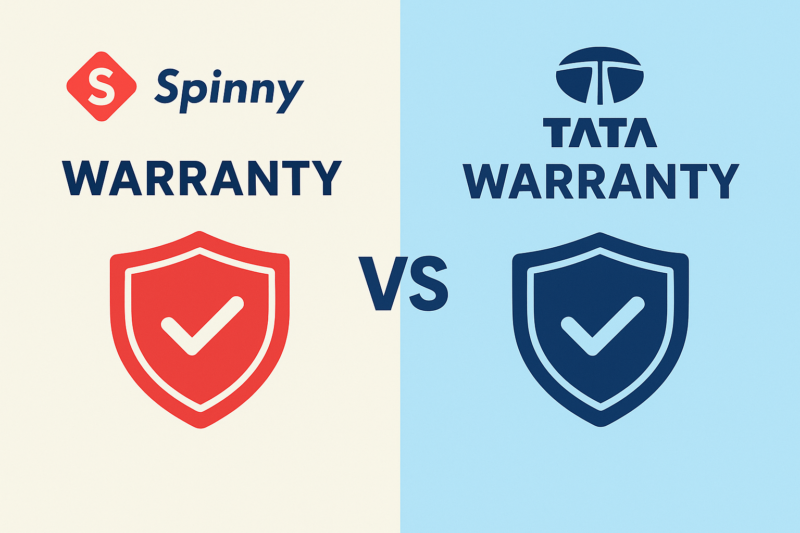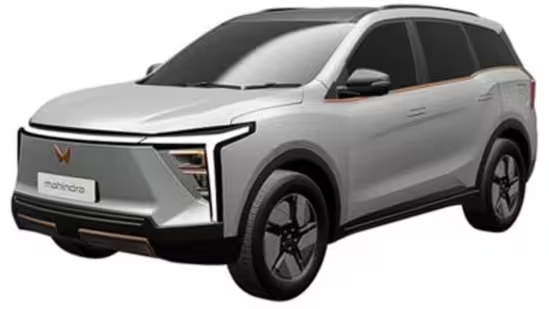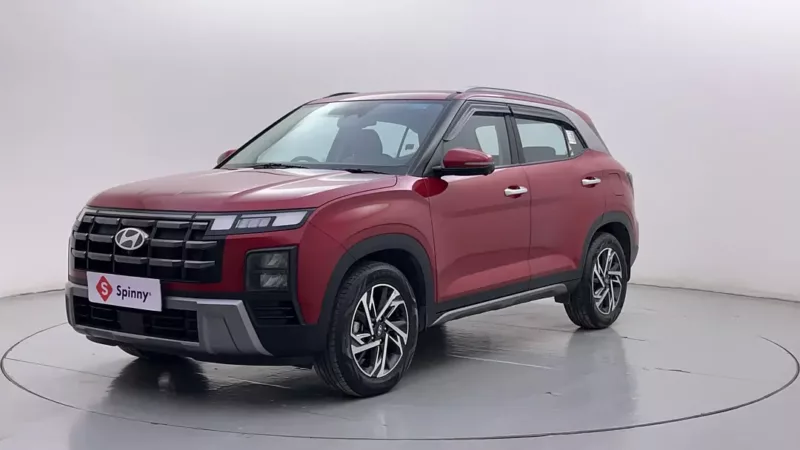
For decades, buying an automobile was as simple as making a choice between petrol and diesel engines. With the introduction of CNG, electric and hybrid cars, consumers finally have more options and factors to consider before buying a car. While each of these engines has its own advantages, hybrid cars are gaining more momentum due to the increasing demand for fuel-efficient yet eco-friendly automobiles.
The increasing acceptance and popularity of hybrid cars are evident from the fact that its sale has increased by 27% during January-July 2024, compared to the same period last year. This blog explores the various types of hybrid cars and how they are engineered to achieve a balance between practicality and eco-friendliness.
How does a Hybrid Car Work?
Hybrid cars can function in many different ways, depending on the type of hybrid system onboard. The most common kind of setup is a parallel hybrid, where both the internal combustion engine (ICE) and the electric motor can power the vehicle either simultaneously or independently.
In this system, the electric motor typically powers the automobile at low speeds, especially during city drives with frequent stops and starts, which helps save fuel and reduce emissions. As the vehicle accelerates or when more power is needed, the ICE takes over, or both systems work together to provide the necessary drive.
On the contrary, series hybrids are purely powered by the electric motor, whereby the ICE is only used to generate electrical power for the motor or to recharge the battery. This setup allows the ICE to operate at its most efficient speed, which is particularly beneficial in scenarios requiring steady power output.
Regardless of the type, all hybrid cars feature regenerative braking, which captures energy that would otherwise be lost during braking and converts it into electricity to recharge the battery, further enhancing the vehicle’s efficiency.

What are the Different Types of Hybrid Cars?
Hybrid vehicles are available in different types, each having its mechanism and advantages. The main hybrid cars types are as follows:
1. Full Hybrids
Full hybrid cars include an electrical motor in addition to a petrol engine to power the wheels. The electrical system in a full hybrid car, however, can manage a much greater workload than one found in a mild hybrid. In fact, most complete hybrids can run on electricity alone for a short while.
- Parallel Hybrids: A parallel hybrid car is a type of hybrid car that runs on an electric motor, internal combustion engine, or both to power the wheels. These vehicles can easily depend mainly on their electric motor for stop-and-go city driving. The benefits of a parallel hybrid are fuel efficiency, regenerative braking, supplemental recharging, and reduced emissions.
- Series Hybrids: In this type of hybrid car, an electric motor drives the vehicle, whereas an engine that uses fossil fuel is only used to generate electricity to recharge the battery. The internal combustion engine doesn’t connect to the wheels in a series hybrid. Rather, it makes electricity to run the electric motor or recharge the battery.
2. Mild Hybrids
Mild hybrids are equipped with battery-powered electric motors that are insufficient to drive the car on their own. These motors only give the engine mild or minimal electrical support to supplement a petrol or diesel engine. The main benefits of mild hybrid cars are that they provide better fuel economy and produce less emission.
3. Plug-in Hybrids
Plug-in hybrids are similar to parallel hybrids but with larger batteries that can be charged from an external power source. This provides a longer range of electric-only driving and, therefore, is quite suitable for short commuters desiring to minimize their use of fossil fuel. When the battery has depleted, the vehicle functions like a conventional hybrid, switching between the engine and the electric motor to continue efficient driving.
What are the Different Features of Hybrid Cars?
Hybrid vehicles come loaded with numerous useful features that add more to their appeal. The top features of hybrid cars are as follows:
1. Regenerative Braking
This feature recovers kinetic energy and reuses it by turning it into electrical energy to recharge the battery. When the driver hits the brakes, the electric motor becomes a generator and reverses the function to capture the energy, which otherwise is wasted in the form of heat. The car stores this energy in the battery for further use, thereby adding to fuel efficiency.
2. Start-Stop System
The start-stop system is designed to save fuel by automatically turning off the car’s engine when it is just idling. Although non-hybrid cars have this feature, too, the start-stop system in a strong hybrid vehicle is much more incorporated with its electric motor.
When the engine is off, the electric motor can completely take over in hybrid cars and enable the car to continue moving at low speeds or in stop-and-go traffic without using any fossil fuel at all. This enables even further improvement in fuel savings and emissions compared to non-hybrid vehicles, where the engine needs to turn on again to move the car.
3. Electric Motor Assist
This provides supplemental power during acceleration, taking some burden off the engine. Instant torque makes the electric motor act as a perfect tool to improve acceleration and reduce the need for the engine to work harder. This brings about smoother, more efficient performance.
4. Eco-Drive Modes
Eco-drive modes in hybrid cars go far beyond just throttle response and performance changes. In a hybrid, the eco-drive mode will finesse the interaction of the electric motor and the internal combustion engine to allow the car to depend more on electric power and less on the engine. This will mean extensive fuel economy with greatly reduced emissions, especially during city driving.
Besides this, hybrid eco-drive modes can apply regenerative braking much more aggressively to optimise the recharge of the battery, enhancing efficiency even further. In comparison, non-hybrid automobiles with eco-drive modes mainly change their throttle response and transmission settings to reduce fuel consumption without benefiting from the contribution given by an electric motor, thus conditioning their efficiency only to equal that of a hybrid.
What are the Components of a Hybrid Car?
The five key components that make a hybrid car are as follows:
- Internal Combustion Engine: It is a conventional engine running either on petrol or diesel. This provides power to the vehicle at high speed and generates electricity to charge batteries in series hybrids.
- Electric Motor: It powers the vehicle during low-speed operation and assists during the acceleration phase of the drive cycle. The motor becomes a generator in a process called regenerative braking.
- Battery Pack: These store electrical energy for the electric motor. Hybrid batteries have been made more robust and efficient compared to conventional car batteries and earlier-generation hybrid batteries. The latest hybrid batteries are designed to cope with the frequent charging and discharging cycles occurring when the vehicle switches between the electric motor and the internal combustion engine.
- Power Control Unit: This component controls the flow of power from the engine and motor. This ensures a seamless transition between pure electric and fossil fuel power for maximum efficiency and performance.
- Transmission: This component transmits the power from the engine and the motor down to the wheels. Among others, hybrids may use a variety of transmissions, such as continuously variable transmissions and dual-clutch transmissions, for maximum performance.
Advantages of Hybrid Cars:
Some of the main benefits of hybrid cars you must know are as follows:
- Better Fuel Efficiency: Less fuel is consumed because of the power provided by the electric motor. This impressive fuel economy is useful in city driving, where electric power is more frequently used. As an example, the Maruti Suzuki Grand Vitara strong hybrid offers fuel efficiency of up to 27.97 kmpl. The non-hybrid variant of the same car deliver 19.38 kmpl, highlighting the greater efficiency offered by hybrid cars. In India, the fuel economy of new light-duty vehicles (LDVs) has improved significantly, with average consumption dropping from 6.9 litres per 100 km in 2005 to 5.7 litres per 100 km in 2019, largely driven by the adoption of hybrid and electric technologies. This shift not only reduces fuel costs but also aligns with government initiatives like the Corporate Average Fuel Economy (CAFE) standards, which aim to further improve fuel efficiency across the automotive sector.
- Lower Emissions: Lower Emissions: While hybrid cars reduce greenhouse gas emissions compared to traditional fossil-fuel vehicles, they do not eliminate emissions entirely. By using both an internal combustion engine and an electric motor, hybrids produce fewer pollutants, contributing to cleaner air and a healthier environment. However, it’s important to note that the internal combustion engine in a hybrid still generates some emissions, although at a significantly lower level than conventional vehicles.
- Regenerative Braking: Recovers energy that would otherwise have been wasted. This innovative feature enhances efficiency, lessens wear on the braking system, and hence brings down maintenance costs.
- Less Dependence on Fossil Fuels: Less use of petrol or diesel is required. Hybrids, in this context, offer a realistic way to minimise the consumption of fossil fuel, which is very important to reduce climate change and preserve natural resources.
Disadvantages of Hybrid Cars
Despite their various benefits, hybrid cars come with a few drawbacks:
- Higher Upfront Cost: It is typically higher than standard vehicles. Advanced technology and components used within hybrids raise their prices, hence being unaffordable for many customers.
- Electric Range at Best: The range is minimal when running only on electricity in plug-in hybrids. While PHEVs really extend the ability to drive on electricity alone, the maximum range is still considerably less than that of a fully electric vehicle, which means fuel will need to be used for longer trips.
- Battery Replacement: Hybrid cars can be expensive and often wear out. Though hybrid batteries are designed to last long, they still will need to be replaced at some point, which can be very costly.
- Complexity and Maintenance: Hybrid vehicles are highly sophisticated. Therefore, they have dual power systems, which bring about complexity to the vehicle, generally increasing the cost of maintenance and repair. Knowledge and special equipment may be required to service hybrid components.
- Weight and Space: Added weight from components, such as a battery pack and an electric motor, takes up available cargo space in hybrids. This could have a bearing on both performance and practicality when compared with traditional conventional car models.
What Are Hybrid Cars: Summary
Hybrid cars are a quantum leap towards sustainable transport. Its electric and conventional power mix brings down fuel consumption and other greenhouse gases. The hybrid cars do come with a higher price tag. However, it is only justified by the long-term savings or environmental benefits to drivers.
The technology associated with hybrids is only getting better, with innovative changes in battery technology, electric motor efficiency, and design all around. Today’s hybrids are more capable, efficient, and versatile than ever before. They now offer today’s drivers an excellent means of reducing their environmental impact without diminishing performance or convenience.
FAQ about Hybrid Cars
What is the life expectancy for a hybrid car battery?
Hybrid car batteries would last between 8 to 10 years, depending on the vehicle’s make, model, and driving habits. Since technological changes are enhancing durability and performance, factors related to temperature, driving conditions, and maintenance regime could impact how long a battery might live.
Are hybrid cars OK for long trips?
Yes, hybrid cars are OK for long road trips. If the battery is low, the operation switches to the internal combustion engine. It is the blend of electric and fuel power that gives flexibility and makes hybrids well-suited to both city and highway driving.
How often should a hybrid be serviced?
Generally, hybrid cars don’t require significantly different maintenance compared to conventional models, except for additional checks on the battery and electrical system. Regular servicing for a car, like changing oil and checking on the brakes and tires, keeps the vehicle running at its best as long as possible.
Can hybrid cars run on electricity only?
Yes, plug-in hybrids can run with electricity alone for short distances, depending on the capacity of the battery. This allows zero-emission driving in cities and also helps to cut down fuel consumption when commuting for small distances. When the battery runs out, it works just like a regular hybrid
How do hybrid cars work and perform compared to conventional cars?
These may offer equal performance, and indeed, an electric motor might let it accelerate as seamlessly. Modern hybrids have to be designed to provide a well-balanced drive experience, with a mix of efficiency from electric power and reliability offered by their internal combustion engines.



